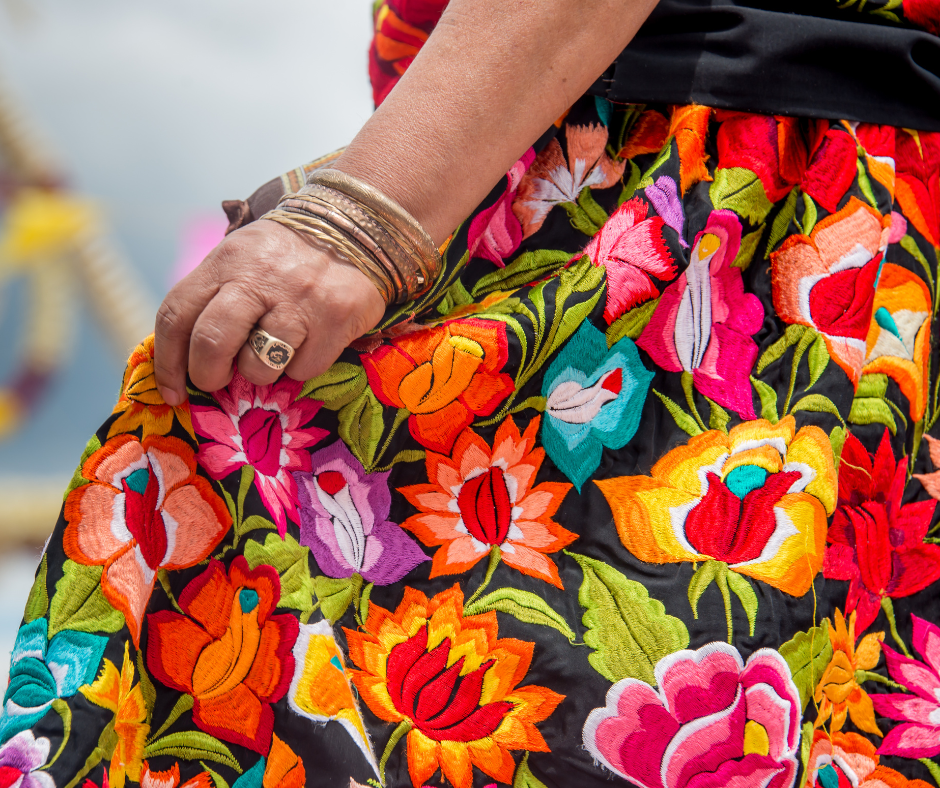La Guelaguetza: A Tapestry of Memory, Music, and Mutual Giving
- Spanish Learning Edge

- Jul 15
- 3 min read
Updated: Aug 3
🌿 Bring this blog to life: |

This Monday, July 21st, 2025 (Lunes del Cerro), thousands will gather on the Cerro del Fortín in Oaxaca for one of Mexico’s most heartfelt cultural celebrations. But La Guelaguetza is more than a colorful stage performance—it is a living tradition rooted in the deep values of reciprocity and communal identity.
To understand its essence, we must go beyond the tourist brochure and into the heart of what makes this event so unique: the original meaning of guelaguetza in Zapotec—which translates to “offering” or “mutual exchange of gifts and services.” Guelaguetza is meant to be reciprocity in action.
The Art of Preparation

Long before the first visitor sets foot in Oaxaca, preparations begin across the state's eight regions. Grandmothers from the Isthmus of Tehuantepec—a region known for its matriarchal heritage and iconic dress styles—teach their granddaughters the delicate embroidery of trajes tehuanos, spectacular pieces symbolizing strength and feminine identity. Weavers work late into the night by candlelight, crafting huipiles—handwoven tunics with patterns portraying spiritual, familial, or natural symbols.

This labor is itself a form of guelaguetza where families share materials, time, and knowledge. Experienced dancers help younger ones refine their steps. Musicians rehearse together to ensure ancient melodies resonate through the open-air amphitheater. Children run through plazas in miniature traditional dress, while elders build connections with delegation leaders from across the state. Each movement is rehearsed, and each thread woven carries cultural and spiritual significance. This is the embodiment of cultural preservation.
Living Tradition
Each group contributes something distinct—offerings rooted in tradition and meaning:

🌿 The Mazatec people bring ceremonial chocolate, a sacred drink traditionally used in rituals to honor ancestors and connect with the spiritual world. More than a treat, it is a vessel of memory, community, and spiritual continuity.

🧶 The Mixe communities offer intricately woven textiles, where each thread carries stories of identity, land, and resistance. These garments express their cosmovisión (a worldview that sees the natural, spiritual, and human realms as deeply interconnected) and serve as living records of ancestral knowledge passed through
generations.
🌾 The Chinantec delegation presents their baile de la cosecha, a vibrant dance that celebrates agricultural abundance and expresses gratitude for the earth’s gifts. Through movement and rhythm, they reaffirm their relationship with the land.

🍍 Flor de Piña dancers from the Papaloapan region lift pineapples over their shoulders, a graceful act of gratitude symbolizing the region’s tropical harvest and communal labor.
🎶 Istmeña women sing traditional songs that give voice to the emotional landscape of their people—songs of joy, grief, and resistance. Their lyrics often celebrate matriarchal strength, mourn ancestral loss, affirm Zapotec identity, and echo the longing and pain of migration and injustice.
Together, these artistic expressions become cultural gifts—shared in trust, received with reverence, and woven into a celebration that honors the soul of each pueblo present.
Why It Matters for Spanish Educators

As language educators, we often teach grammar and vocabulary—but we cannot forget that language lives within culture. La Guelaguetza reminds us that authentic learning involves context, identity, and collective memory. For example, the participant communities don’t just speak Zapotec, Mixe, or Spanish; they live their languages through movement, music, ceremony, and connection. For our students, this is a powerful model: language not as a test, but as a bridge to other people, to shared histories, to global understanding.
As the delegations walk onto the Cerro del Fortín this Monday, they will be interwoven in the fabric of culture, memory, and mutual giving. And for those of us who teach Spanish, it’s a call to reflect: How can we create spaces of guelaguetza in our classrooms? 🌺
© Spanish Learning Edge. Angélica García Genel, Editor.
🌿 Bring this blog to life: |



